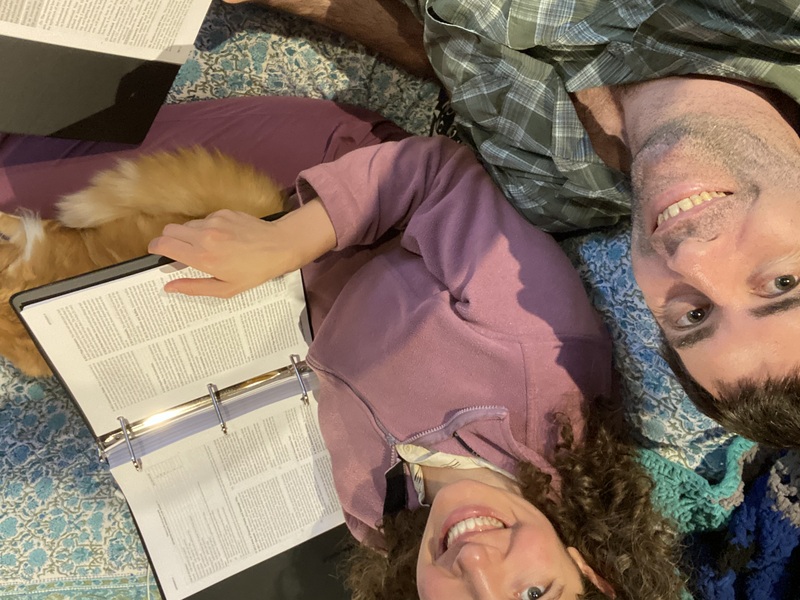Planning for our dome is apparently our latest hobby. Jon and I have been spending many hours studying the California Building Standards Code, so we can correctly plan and build our dome. Actually, to quote Dennis Johnson of Natural Spaces Domes, “If you build a house to code, then you just built the worst house you can build.” He is always encouraging his customers to build better than the code standards. For example, if the insulation is required by code to be R-49, Dennis says to make it R-60. If you don’t know, the larger the R value (resistance to heat transfer), the more insulative quality there is. It makes sense to invest in a higher R-value for the walls and roofs because the heating and cooling costs, both monetary and environmental, will be lower over the life of the house. Dennis will help us plan our insulation, but he doesn’t do Plumbing or Electrical plans. Enter Jon and Robin.
Jon has been reading the California Electrical Code and calculating our loads. We plan to have 100% electric heating, cooling, and appliances in the house, plus we drive electric cars, so we have large electrical needs. We will have a big solar array because Bishop is sunny, but we also plan to connect to our local power provider.
My 2019 California Plumbing Code has information for both septic systems and water supply (and more, but I haven’t read beyond those two subjects yet). I used it heavily to design our preliminary septic system, and now I’m working on the calcs for sizing the water supply system.
When Jon ordered the plumbing code, the publisher mistakenly sent us the code for North Carolina. That was a reasonably sized binder. Then we got the California version. It is at least twice as thick! California may have more rules, but it is definitely worth it to live here in the sunshine near the amazingly beautiful and fun Sierra Nevada mountains.

